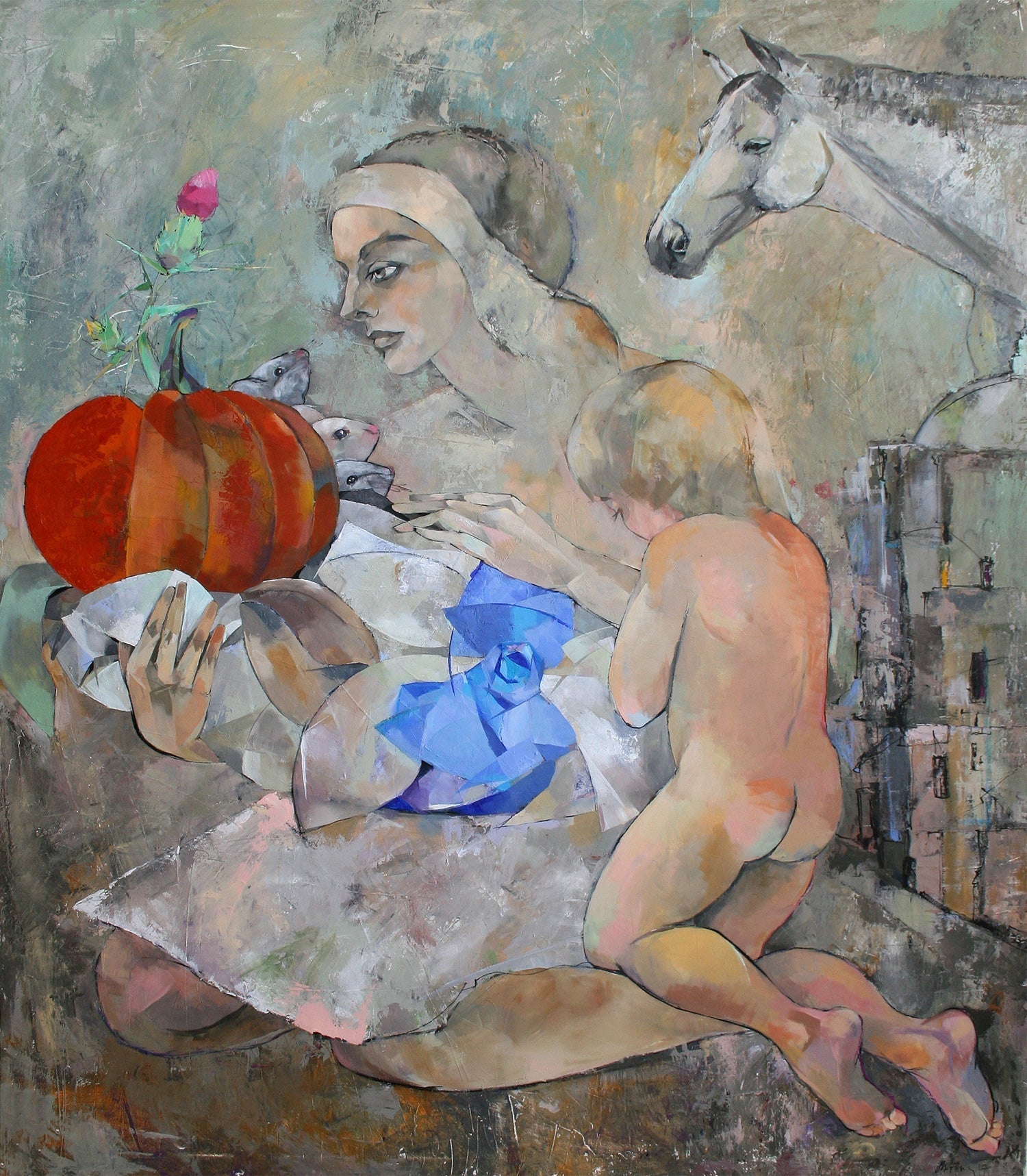
“I knew as a child that I was an artist”
by Markus Lippeck
·
A conversation with Marina Krasnitskaya about inner states, rusty surfaces and peace within oneself
When you stand in front of a painting by Marina Krasnitskaya, you sense no intention of explanation. Her works speak a quiet but haunting language—the language of feelings that don't always require words. We spoke with her about her artistic path, her intuitive work, and the quiet pursuit of inner peace.
Marina, you were born in St. Petersburg and later lived and worked in Germany. How did your childhood shape your artistic path?
I was born into a family of artists in Leningrad and grew up surrounded by sculptures, paintings, exhibitions, museum visits, and conversations about art. From the very beginning, I was surrounded by creativity; it was like a natural language. The path to the Mukhina Art Academy was a natural step—it was never really a question of whether I would become an artist. I simply knew it as a child.
You later founded an advertising agency in Germany. A stark contrast.
Yes, after about ten years in Germany, I built my own advertising studio – it was a completely different world that fascinated me. I programmed, created animated websites, and felt like it was all a game. It was like a parallel universe to my artistic work. After twelve years, I said goodbye to it. It was time for something else.
Your current exhibition has the poetic title "In the Light of Peace." What does this "peace" mean to you?
That was your title, by the way, Anja! But I've embraced it completely for myself. For me, that's peace with oneself—with one's own consciousness, one's own emotions. The path to that is long, complicated,
painful. But I searched for it – and found it. Perhaps this is exactly the light I'm looking for.
What feelings are reflected in your work?
Everything that is part of being human: love, hope, waiting, loneliness, longing, but also melancholy and darkness. I work very intuitively – my pictures emerge from the moment; they reflect my state at that very moment.
What is the metal oxidation technique that you often use?
A few years ago, I started oxidizing metal—it was a coincidence, but I was immediately fascinated. These surfaces are like a form of stillness for me.
Brushstrokes, no line is intrusive. I often work with acrylic and ink over them. It's a gentle, almost meditative process. And every surface is unique.
Can art change the world?
I don't think so—unfortunately. Art can't save the world. Those receptive to art are usually not violent. But those who practice violence are often inaccessible to art. Therefore, art cannot bring peace in the global sense. For me, it remains a very personal space—a mirror of my own feelings. The events in the world today make me sad, even paralyzed. It's difficult to create in times like these.
What's next for you?
I want to continue working with oxidized surfaces, with many layers and plenty of time. I want to listen to my intuition—and trust it.
And what advice would you give to young artists?
I would advise them to always remain hungry—in the best sense. Don't settle, search, ask questions, and move on. Everyone has their own path in art—but you have to truly want it.

